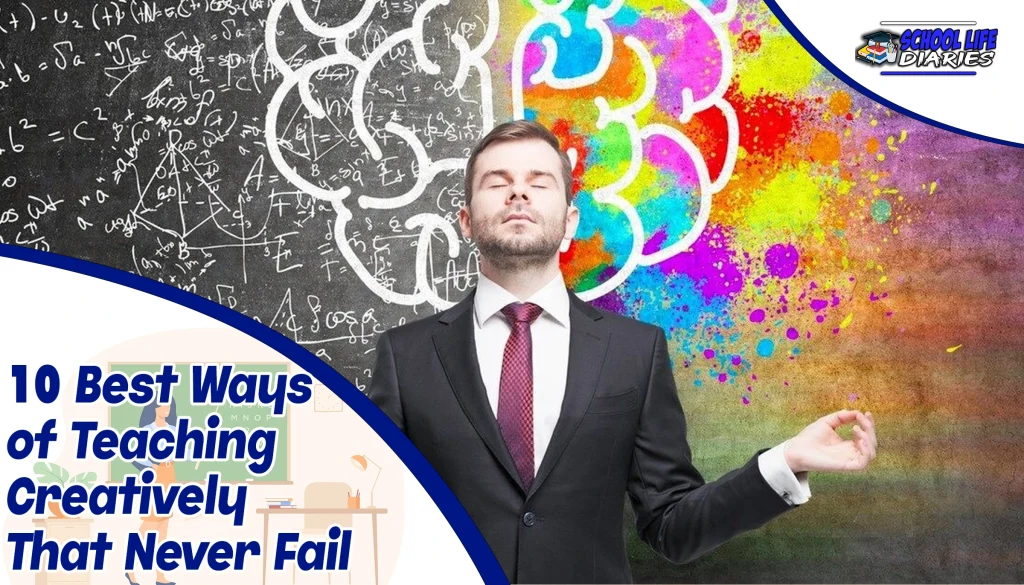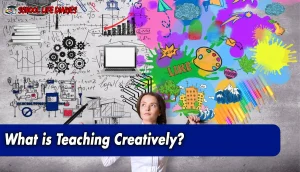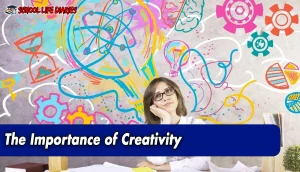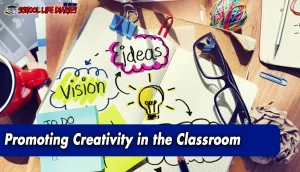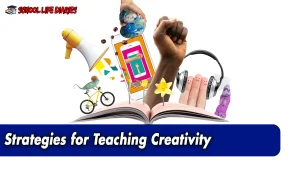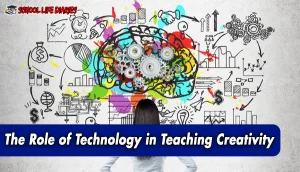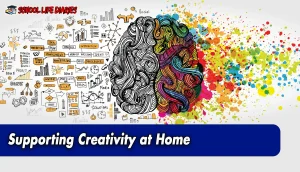Creativity is a vital skill in today’s rapidly changing world. It fosters innovation, critical thinking, problem-solving, and adaptability. As a result, educators recognize the importance of nurturing creativity in students. Teaching creatively involves employing strategies that encourage originality, imagination, and inventive thinking. In this article, we will explore what teaching creatively entails, its significance, ways to promote creativity in the classroom, and effective strategies for nurturing creativity in students.
What is Teaching Creatively?
Teaching creatively is an educational approach that transcends the traditional confines of rote learning and embraces an imaginative and innovative pedagogy. It entails not just imparting information and facts to students but actively engaging them in a way that sparks their curiosity, fosters critical thinking, and ignites their creativity. A creative teacher seeks to inspire and captivate students by employing diverse teaching methods that cater to varied learning styles. They encourage students to question, explore, and experiment, promoting a deeper understanding of the subject matter.
This approach involves designing lessons that are interactive, experiential, and often interdisciplinary, blurring the lines between subjects and integrating arts, sciences, and humanities. Creative teaching cultivates an environment where students feel encouraged to express their thoughts, generate novel ideas, and contemplate solutions to real-world problems.
The Importance of Creativity
The importance of creativity in today’s world cannot be overstated. Creativity is the driving force behind progress, innovation, and adaptability. In a rapidly evolving global landscape, where challenges are intricate and diverse, creativity is the key to finding novel solutions and envisioning a better future. Individuals who possess creative thinking skills are more likely to excel in their academic pursuits, professional endeavors, and personal lives.
Creativity nurtures a mindset that values originality and encourages individuals to think outside conventional boundaries. It encourages them to connect seemingly unrelated ideas, leading to breakthroughs and advancements in various fields. Moreover, creativity enhances critical thinking, problem-solving abilities, and the capacity to learn from failures. It empowers individuals to express themselves uniquely, contributing to a richer and more vibrant society.
Promoting Creativity in the Classroom
- Foster a Positive Learning Environment: Create a safe, inclusive, and encouraging classroom atmosphere where students feel comfortable expressing their ideas and taking risks.
- Encourage Divergent Thinking: Pose open-ended questions and assignments that allow students to generate multiple solutions and explore different perspectives.
- Integrate Arts and Creative Subjects: Introduce arts, music, drama, and other creative subjects into the curriculum to encourage diverse forms of expression and creativity.
- Provide Autonomy and Flexibility: Allow students to have some control over their learning, enabling them to choose topics, projects, or approaches that align with their interests and strengths.
- Collaborative Learning Opportunities: Promote group projects, discussions, and collaborative activities that encourage students to exchange ideas and learn from one another.
- Utilize Real-world Challenges: Incorporate real-life problems or scenarios into lessons, encouraging students to apply their creativity to find innovative solutions.
- Celebrate and Showcase Creativity: Recognize and celebrate students’ creative achievements through exhibitions, presentations, or displays, boosting their confidence and motivation.
- Experiment and Take Risks: Encourage students to experiment, try new approaches, and learn from failures, fostering resilience and a growth mindset.
- Integrate Technology Creatively: Utilize technology to enhance creativity by incorporating digital tools for creating, designing, and presenting innovative projects.
- Provide Varied Learning Experiences: Offer a mix of traditional teaching methods, hands-on activities, outdoor experiences, and interactive sessions to cater to different learning styles and stimulate creativity.
Strategies for Teaching Creativity
- Mind Mapping and Brainstorming: Encourage students to create mind maps or engage in brainstorming sessions to visualize ideas and connections.
- Storytelling and Narrative Building: Use storytelling to spark imagination and creativity, allowing students to create and narrate their own stories.
- Role-playing and Simulation: Incorporate role-playing activities that encourage students to view situations from different perspectives and think creatively.
- Project-based Learning (PBL): Implement PBL approaches, where students work on extended projects addressing real-world challenges, promoting creativity and critical thinking.
- Socratic Questioning: Employ the Socratic method to ask thought-provoking questions that stimulate critical thinking and creativity.
- Design Thinking Process: Introduce the design thinking process, encouraging students to identify problems, ideate solutions, prototype, and iterate.
- Visual Arts and Creative Expression: Integrate art activities to allow students to express themselves creatively through drawing, painting, or sculpture.
- Creative Writing and Poetry: Encourage creative writing and poetry, providing students with a platform to express their emotions and thoughts artistically.
- Inquiry-based Learning: Promote inquiry-based learning, allowing students to explore topics of interest and generate their own research questions and solutions.
- Cross-disciplinary Integration: Integrate different subjects, encouraging students to make connections and think creatively across various disciplines.
The Role of Technology in Teaching Creativity
The role of technology in teaching creativity is instrumental and transformative, revolutionizing the educational landscape. Technology offers a vast array of tools, platforms, and resources that can immensely enhance the creative learning experience. These tools provide interactive and engaging experiences, allowing students to visualize abstract concepts, experiment in a virtual environment, and collaborate seamlessly with peers.
Technology facilitates access to a wealth of information and diverse perspectives, enabling students to broaden their understanding and inspire innovative thinking. It also enables personalized learning experiences, catering to individual student needs and preferences.
Supporting Creativity at Home
Supporting creativity at home is a vital aspect of a child’s holistic development. Parents play a fundamental role in nurturing and fostering their child’s creativity in a supportive and encouraging environment. One of the foundational ways to support creativity is by providing ample opportunities for exploration and discovery.
Offering a diverse range of stimulating activities, such as arts and crafts, reading, outdoor adventures, or scientific experiments, allows children to express themselves creatively and broadens their horizons. Encouraging imaginative play and allowing children to engage in unstructured, free playtime helps enhance creativity by fostering their ability to generate unique ideas and solutions.
Providing access to various art supplies, books, musical instruments, and educational toys enables children to experiment and discover their interests. Acknowledging and valuing a child’s ideas, even if unconventional or imaginative, boosts their confidence and motivation to further explore their creativity. Overall, creating an environment that nurtures creativity at home sets a strong foundation for a child’s future growth and success.
Conclusion: 10 Best Ways of Teaching Creatively That Never Fail
In a rapidly evolving world, fostering creativity is more crucial than ever. Teaching creatively is a strategic approach that empowers students to become innovative thinkers, encouraging them to explore beyond conventional boundaries. This article has delved into the concept of teaching creatively, highlighting its significance, strategies, and ways to promote creativity both in the classroom and at home.
Teaching creatively involves creating an environment where students feel safe to express their thoughts, experiment with ideas, and collaborate with peers. By encouraging divergent thinking and integrating arts and various creative subjects into the curriculum, educators provide students with platforms to cultivate and showcase their unique abilities. Offering autonomy, real-world challenges, and celebrating creativity contribute to a culture that nurtures innovation and resilience. These strategies encourage students to think critically, solve problems, and apply their creativity in meaningful ways.
In conclusion, teaching creatively is a holistic and innovative approach that goes beyond traditional education. It nurtures the next generation of thinkers and leaders, equipping them with the skills they need to succeed in a complex and ever-changing world. By embracing and implementing these creative teaching methods, we can shape a future where creativity thrives, and individuals confidently embrace new challenges with inventive solutions.

